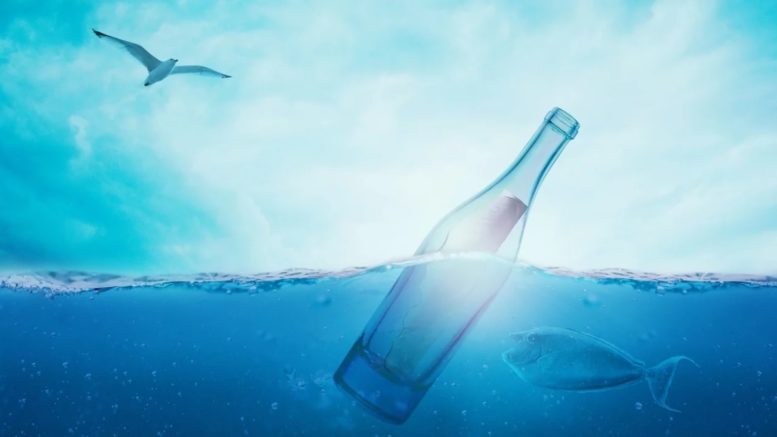If you’ve done any research on the subject of water filters lately, you will certainly have stumbled upon reverse osmosis systems. These are usually promoted as the most effective type of water filter, and it is true that they can remove a large percentage of contaminants from water.
Or to put it bluntly: For those who live in areas without access to safe drinking water, a reverse osmosis system can be a literal life-saver.
Still, if you’re like most people, you likely have no clear picture of how these devices work. As you will soon learn, they’re not quite as complex as those water filter advertisements might have lead you to believe.
What Is Osmosis?
Before we speak about reverse osmosis, let’s talk about regular osmosis first. Osmosis is a natural process that occurs every day in the bodies of all living creatures. Technically, it is the passing of a solvent (usually water) through a semipermeable membrane.
Like the specialized filters found in a reverse osmosis system, cell walls are semipermeable membranes. Water passes through these cell walls, but most other substances cannot. Osmosis is one of the main mechanisms by which living cells regulate their salt content.
What Is Reverse Osmosis?
Reverse osmosis works very similarly to regular osmosis. Both processes involve the passing of a solvent (again water) through a semipermeable membrane.
However, when regular osmosis occurs, the solvent moves from the less concentrated solution of the membrane to the more concentrated side. In reverse osmosis, the exact opposite happens: The flow goes from the more concentrated solution to the less concentrated side. In other words, it’s the same process in reverse.
This reversal of flow is achieved through the use of water pressure. By pushing the water in the opposite direction of the natural osmosis flow, it becomes possible to remove 99% of contaminants.
Addendum: We should probably explain what is meant by “more concentrated” and “less concentrated” side. These terms refer to the solute, so anything dissolved in a solvent. With normal osmosis, water flows from the less to the more contaminated side until both solute concentrations are equal. Obviously, that’s not what we want for water filtration usage. We want water to flow from the side containing more contaminants to the side containing less.
Where Did the Process Originate?
Reverse osmosis is a relatively new method of water filtration. As you can clearly see, it was inspired by ways in which cell walls purify their incoming water. Some scientists even regarded osmosis is nothing more than simple water filtration.
However, it has since been discovered that the internal pressure of cells plays a vital role, as well. This is what makes osmosis and reverse osmosis distinctively different from simple filtration.
In the 1940s and 1950s, American scientists began exploring this concept as a way to purify seawater. The idea was to eliminate all the nation’s water shortages in one fell swoop. However, the idea didn’t get off the ground at first because the quantities produced were not sufficient. That changed when two UCLA researchers figured out how to make a reverse osmosis membrane from cellulose acetate. Incidentally, most eyeglass frames are made of the same polymer.
How Can a Reverse Osmosis System Provide Clean, Safe Water?
We’ve talked about osmosis and we’ve talked about reserve osmosis. Finally, let’s talk about how a reverse osmosis system actually works.
A reverse osmosis system usually hooks up to your tap in the same way that any other filter would do. The first step is to run raw tap water to the pre-filters. The pre-filters are designed to remove larger particles and solids, thus reducing the workload on the main device. In many instances, pre-filtration also includes at least carbon filter for extra purification. Activated carbon is great for removing chemicals that would otherwise damage the reverse osmosis membrane.
Once all this is done, the filtered water is sent to the main RO chamber. Here, the water is separated into contaminated and uncontaminated water. Pressure forces the water molecules through the reverse osmosis membrane – in the opposite direction of the natural osmosis flow – causing the water to move from the more contaminated side to the less contaminated side. What’s left behind is a small amount of concentrated wastewater that gets flushed down the drain.
After purification, the water is sent to a storage tank. That’s where it stays until you call for that water with a button or lever. Before it comes out of the dispenser, the water will often go through one final stage of carbon filtration to remove any residual tastes.
The Safest Way to Purify Drinking Water
Reverse osmosis water filter systems present the safest and most thorough way to purify drinking water. You could literally take seawater straight from the ocean and this technology can convert it into fresh potable water.
In fact, this process is used to provide much of the drinking water in places where natural water sources are scarce. Desert countries, in particular, have found reverse osmosis to be a lifesaver.
If you really need to improve your water quality at home, we are certain that you will find reverse osmosis water purification to be a viable option. The best systems are already available for less than $200. If you are willing to invest a little more, you can choose between additional features such as remineralization and UV light water treatment. For $500 which marks the upper end of the price range, you can buy a certified unit that will solve all your water problems for good.
